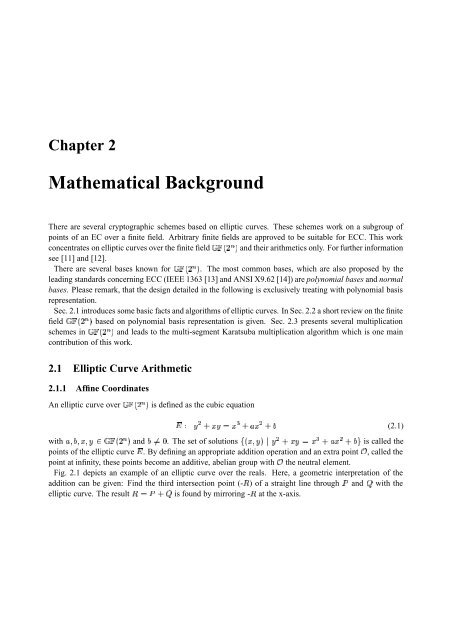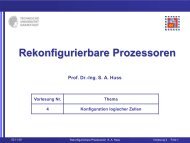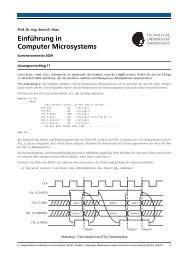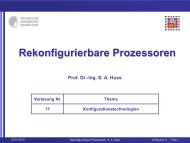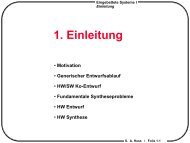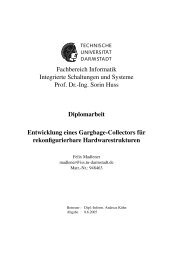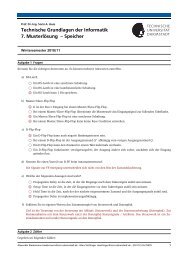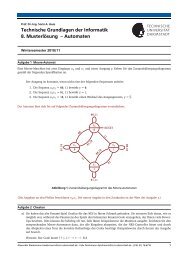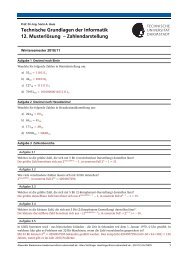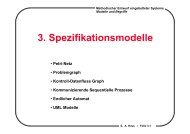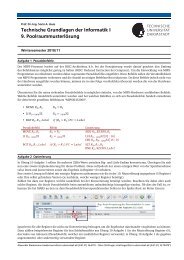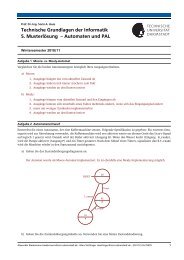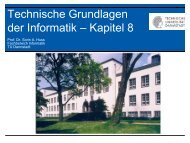FPGA based Hardware Accleration for Elliptic Curve Cryptography ...
FPGA based Hardware Accleration for Elliptic Curve Cryptography ...
FPGA based Hardware Accleration for Elliptic Curve Cryptography ...
Create successful ePaper yourself
Turn your PDF publications into a flip-book with our unique Google optimized e-Paper software.
Chapter 2<br />
Mathematical Background<br />
There are several cryptographic schemes <strong>based</strong> on elliptic curves. These schemes work on a subgroup of<br />
points of an EC over a finite field. Arbitrary finite fields are approved to be suitable <strong>for</strong> ECC. This work<br />
concentrates on elliptic curves over the finite field- and their arithmetics only. For further in<strong>for</strong>mation<br />
see [11] and [12].<br />
There are several bases known <strong>for</strong> . The most common bases, which are also proposed by the<br />
leading standards concerning ECC (IEEE 1363 [13] and ANSI X9.62 [14]) are polynomial bases and normal<br />
bases. Please remark, that the design detailed in the following is exclusively treating with polynomial basis<br />
representation.<br />
Sec. 2.1 introduces some basic facts and algorithms of elliptic curves. In Sec. 2.2 a short review on the finite<br />
field <strong>based</strong> on polynomial basis representation is given. Sec. 2.3 presents several multiplication<br />
schemes in- and leads to the multi-segment Karatsuba multiplication algorithm which is one main<br />
contribution of this work.<br />
2.1 <strong>Elliptic</strong> <strong>Curve</strong> Arithmetic<br />
2.1.1 Affine Coordinates<br />
An elliptic curve over is defined as the cubic equation<br />
),5 176 598:) (2.1)<br />
/¢02143<br />
1FE and>HG 6!I<br />
. The set of solutions J=K5D@ 1 ML 1 3 )?5 1N6 5 8 )O;P5 3 )Q>SR is called the<br />
points of the elliptic curve/<br />
. By defining an appropriate addition operation and an extra pointT , called the<br />
with;9@A>B@C5D@<br />
point at infinity, these points become an additive, abelian withT group the neutral element.<br />
Fig. 2.1 depicts an example of an elliptic curve over the reals. Here, a geometric interpretation of the<br />
addition can be given: Find the third intersection (-U point ) of a straight line through V and with the<br />
elliptic curve. resultU<br />
6 Q)WV The is found by -U mirroring at the x-axis.


